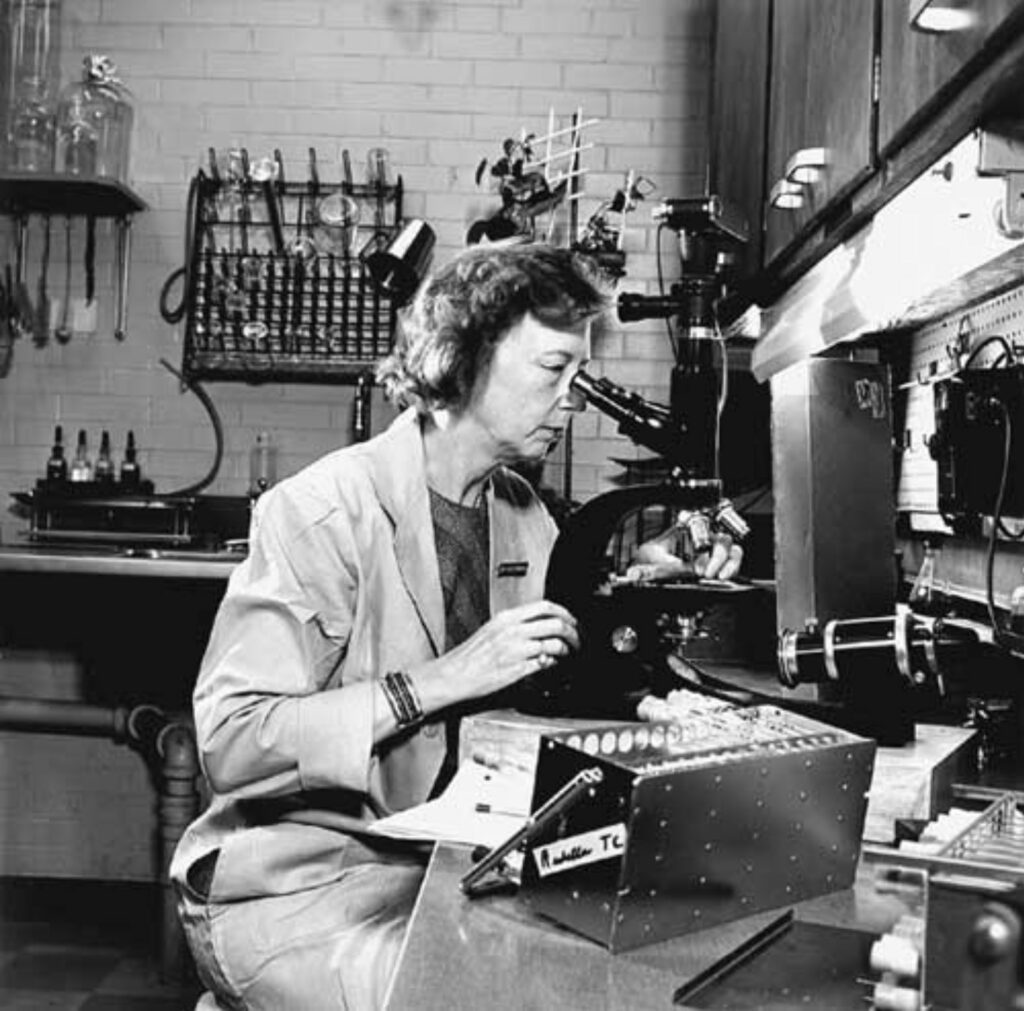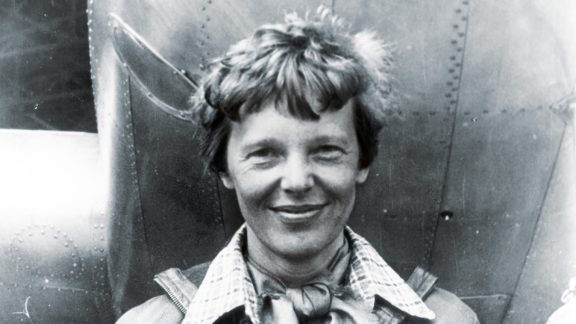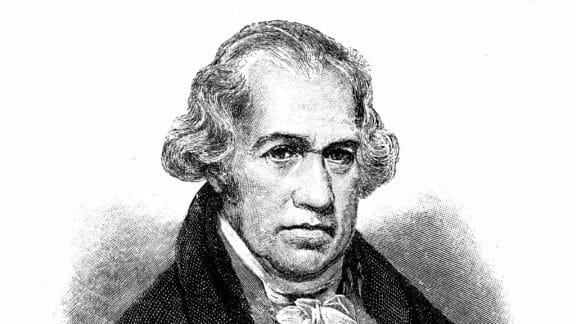At Primetals Technologies, we constantly strive to pioneer new and groundbreaking solutions for the steel industry. We work with passion, inspired by our close partnerships with steel producers from all around the world. Another source of inspiration are the great pioneers that have come before us—innovators who have made a profound impact on the way we live and changed the course of history. In this series, we look at the life, the challenges, and the achievements of some of the most outstanding pioneers of all time.
If you’re meticulous about keeping your shots up-to-date, or you’re an avid traveler, especially to tropical countries, it’s highly likely you will have a vaccination certificate full of all manner of colorful stickers bearing exotic names that quite frankly could suit any character in a Philip K. Dick novel. Regardless of how you might feel about vaccinations, they save lives, and one man is credited with having saved more lives than any other human: the English physician and scientist Edward Jenner, whose fascination with an urban legend and an unwavering faith in a potentially fatal experiment ultimately led to the world’s first vaccine.
In 1757, an 8-year-old boy in England was inoculated with smallpox. He developed a mild case, and became immune to the disease. The boy was Edward Jenner, and it is believed that his crusade to prevent the disease was driven by his own traumatic childhood experience of inoculation (he was starved and locked in a stable with other infected boys until the disease had passed) as he strove to find a safer and less terrifying alternative. Jenner went on to become a relentless advocate of vaccination and devoted himself at considerable personal cost to its research, and his work changed the way medicine was practiced and earned him the epithet “the father of immunology.”
In the grip of the speckled monster
Smallpox, a serious, infectious, and disfiguring disease caused by the variola virus, was the scourge of 18th Century Europe, where it is calculated to have killed some 400,000 people every year, and one third of those who survived went blind. The symptoms were horrendous: pus-filled skin lesions would form, eventually drying out, dropping off, and leaving deep, pitted scars, which led to smallpox becoming affectionately known as the “speckled monster” in 18th Century England.
- … that childhood vaccines save over 4 million lives every year, equating to 11,000 children every day, 450 children every hour, or 8 children every minute of every day, according to the World Health Organization (WHO).
- … that the Latin words for cow and the cowpox virus are “vacca” and “vaccinia” respectively, which prompted Edward Jenner to call his new procedure “vaccination”.
- … that an antigen is the most important ingredient in a vaccine. Antigens are the active ingredient that cause an immune response in the body.
- … that vaccine efficacy measures a vaccine’s capacity to protect against a disease in ideal conditions, such as a controlled vaccine trial. Vaccine effectiveness, on the other hand, refers to a vaccine given outside a clinical trial—in the real world.
- … that honors to Jenner include a statue in Kensington Gardens, London, as well as the eponymous lunar crater.
- … that “herd immunity”, where most of a population becomes immune to an infectious disease, is achieved either through vaccination or previous infection. The WHO supports the vaccination route, which prevents unnecessary cases and deaths.
A world less burdened by preventable disease would be a world of more balance and greater opportunity for all.”
Nelson Mandela
Former President of South Africa
and founding Chair of the Vaccine Fund Board
Before Jenner, it was already known that smallpox survivors were immune to the disease, and although not without high risk, inoculation became a standard practice. In 1717, Lady Mary Wortley Montagu (see box), having lost her brother to smallpox and survived the disease herself—which left her face severely disfigured—, witnessed inoculation first hand while in the Ottoman Empire, where her husband was British Ambassador in Constantinople (now Istanbul).
Inoculation, or variolation, was used to prevent rather than cure smallpox by introducing live smallpox virus into the scratched skin of a healthy person. With the shadow of her husband’s recall to England hanging over the family, Lady Mary quickly decided to have her own four-year-old son, Edward, inoculated, making him the first Englishman to undergo the—ultimately successful—procedure. Lady Mary is credited with introducing the technique to England.
Jenner and the Milkmaid
Edward Jenner was not the first to discover the link between cowpox infection and subsequent immunity to smallpox, and neither was he the first to carry out cowpox inoculation. But he was the first to scientifically attempt to control a disease through vaccination, and his relentless work lies at the heart of immunology, the study of the immune system and today a key branch of the medical and biological sciences.
The story goes that Edward Jenner, intrigued by folklore that people who had caught cowpox, a mild viral infection frequent among dairymaids, were naturally immune to smallpox, and inspired by his personal experience of variolation as a boy, decided to carry out his own, very risky experiment. In 1796, young milkmaid Sarah Nelms approached Jenner with cowpox lesions on her hands and arms, having caught the infection from her cow, Blossom. He used material from one of the pocks on Sarah’s hand to inoculate 8-year-old James Phipps, who subsequently suffered only a mild fever. Two months later, Jenner inoculated young James with material from a fresh smallpox lesion, and he proved immune to the disease. This was the birth of the science of immunology (footnote: Blossom has also been immortalized: her hide is on display on the wall of the library at St George’s Medical School in London).
With pioneers such as Edward Jenner, Louis Pasteur, or Alexander Fleming hogging the limelight, you could be forgiven for never having heard the names of many of the exceptional female scientists whose work contributed to vaccine development and who paved the way for modern medicine, such as Drs. Pearl Kendrick and Grace Eldering (whooping cough), Dr. Margaret Pittman (HIB), Dr. Isabel Morgan (polio), or Dr. Anne Szarewski (HPV). Difficult as it is to single out anyone in particular, here are just a few:
Lady Mary Wortley Montagu (1689—1762):
This British aristocrat preceded Edward Jenner by introducing smallpox inoculation into Western medicine. After witnessing inoculations against smallpox in the Ottoman Empire, she had her four-year-old son inoculated in 1718, and on returning to London began a campaign to promote the procedure in spite of strong resistance from the medical establishment.
Dr. Dorothy Horstmann (1911—2001):
An epidemiologist and virologist, Dr. Horstmann’s research proved that poliovirus reaches the brain through the blood, a discovery that led to the development of a polio vaccine. Polio has been all but eradicated, with cases down more than 99% since 1988.
Dr. Anna Wessels Williams (1863—1954):
She was the first to isolate the bacteria that causes diphtheria in 1894, leading to the development of the first diphtheria antitoxin and subsequently a diphtheria vaccine. Today, diphtheria is preventable, and children can be protected through the combined diphtheria, tetanus, and pertussis (DTP) vaccines.

Rejected by the establishment
In the wake of the success of his—let’s face it, by today’s standards highly unethical—experiment, and despite Jenner’s own lack of understanding of how the science behind his discovery actually worked, Jenner ploughed on and repeated this process several more times. In 1797 his observations were rejected by the Royal Society, who dismissed his ideas as “too revolutionary.” Undeterred, and after a few more experiments, he privately published his findings in 1798 in “An Inquiry into the Causes and Effects of the Variolae Vaccinae,” where he coined the word “vaccine.” Again, the medical community was less than impressed by his paper.
Not only did Jenner face opposition from the medical profession, there were also plenty of “anti-vaxxers” who feared the consequences of being deliberately infected with material from cows, and who rejected the practice on religious grounds.
Jenner’s belief in his vaccination process was nevertheless so unwavering that he set up a vaccination center, his Temple of Vaccinia, in the summerhouse in his garden, providing free vaccinations to the poor. He offered samples of the vaccine material to other physicians so that they could garner trust among their own patients. Eventually, word of his success spread throughout England and then overseas, and, with the backing of other physicians as well as prominent figures such as King Charles IV of Spain and Thomas Jefferson in Virginia, U.S.A., advocating the practice, by 1800 the use of vaccination had gained unstoppable momentum.
It is remarkable that within 20 years of its discovery, millions of lives were being saved by the vaccine, and although later in the 19th Century it became clear that revaccination was necessary (because it turned out that smallpox immunity was not lifelong), the number of deaths from smallpox was declining. Vaccination eventually replaced variolation, which became prohibited in England in 1840.
Jenner didn’t seek to make any money from his vaccine, he wasn’t interested in patenting it.”
Owen Gower
Manager of Dr. Jenner’s House Museum
Despite falling victim to ridicule and encountering resistance from within the medical profession and from the clergy, Jenner’s achievements were eventually recognized and he received the honors he deserved. He was undoubtedly a remarkable scientist, and a man of many talents; his interest in zoology also led him to the discovery—contrary to the theory of the time—that the young, newly hatched cuckoo was responsible for evicting the eggs and fledgling chicks out of the host’s nest rather than the adult cuckoo. Indeed it was Jenner’s familiarity with animal biology that made him even more of an expert in human-animal disease transmission. And however questionable the ethics of his original experiments, his work and dedication led to the eventual eradication of smallpox; the World Health Organization (WHO) launched a campaign to eradicate the disease in 1967, when there were still up to 15 million cases a year, and by 1980 the WHO declared that “Smallpox is Dead!”, finally fulfilling Jenner’s prophecy about vaccination that “the annihilation of the smallpox, the most dreadful scourge of the human species, must be the result of this practice”.
Since Jenner’s original experiment, progress in the development of vaccinations has been astounding, but the science of immunology remains complex and challenging. On the one hand we have seen how a vaccine for Covid-19 was developed in a matter of months, while on the other hand there is still no vaccine for HIV after 40 years. But life-saving breakthroughs are being made all the time and it is thanks to the pioneering work of Edward Jenner, the self-proclaimed “Vaccine Clerk to the World”, that vaccine technology, as well as the processes involved in ensuring the safety and efficacy of vaccines, continues to progress.
Timeline
1749
Born May 17 in Berkeley, Gloucestershire, England, the son of a vicar
1754
Jenner is orphaned.
1763
Becomes an apprentice to a surgeon in Sodbury, near Bristol
1770
Jenner is apprenticed in surgery and anatomy under surgeon John Hunter at St. George’s Hospital, London.
1772
Returns to Berkeley as a trained doctor
1788
Marries Catherine Kingscote, goes on to father three children; his eldest son and wife would die of tuberculosis in 1810 and 1815 respectively.
1796
Makes a breakthrough after successfully testing his hypothesis that infecting a person with cowpox could protect them from smallpox.
1798
Word of Jenner’s success spreads following self-publication of his “inquiry” pamphlet
1821
Appointed physician extaordinary to King George IV
1823
Dies of apparent stroke on January 26, aged 73


